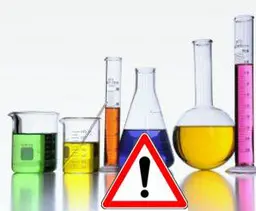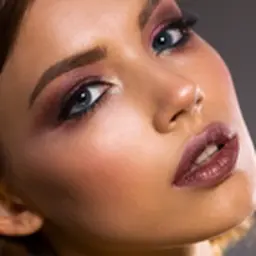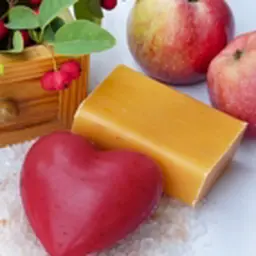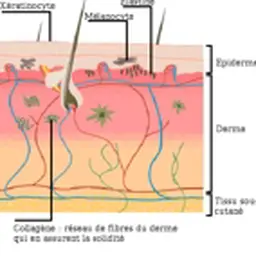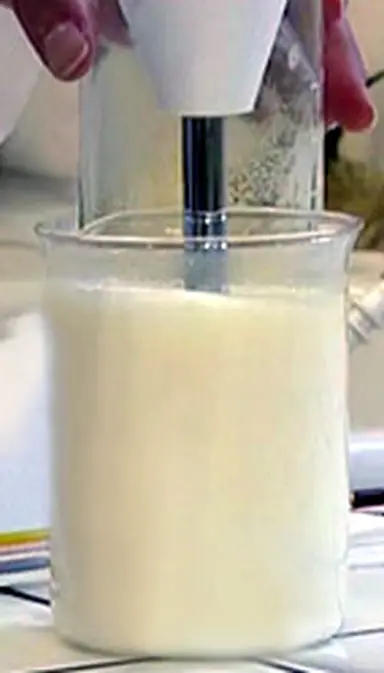
A conservative guess is that 90% of cosmetic products come as emulsions: creams, gels, toothpastes, scrubs, masks, foundations … all are emulsions. And although their uses are very different, their bases are very similar: it is primarily a mixture of water and fats (lipids, oils) … along with some other ingredients.
Water
Referred to as " Aqua " in the list of ingredients , it may be more than half of the product (or even more). It can be spring water, thermal, demineralized, distilled, reverse osmosis water … or just tap water. Any "kind" of water may be used in cosmetic products as long as it meets current criteria of purity and drinkability.
Water
is seen as an ingredient per se. Though it is often a neutral basis, it may nevertheless be considered as an active ingredient if it has specific properties, such as thermal waters (with their minerals) or
flower waters
(with their plant extracts) for example.
It is classified as a natural ingredient, but can never be called organic because it is not "grown" according to the principles that govern this type of agriculture.
Fats
This is the second major component of the emulsions, and comes as oils, butters and waxes. Four kinds are mainly used by the cosmetic industry:
•
Mineral oils and waxes
, which are derived from hydrocarbons (produced by the petrochemical industry).
•
Silicones
, which are synthetic molecules based on silicon and oxygen and their derivatives.
•
Vegetable oils
: They are a lot, and come from fruit, nuts, beans, seeds, stones, cereals, in fact, everything
vegetable oils
may be extracted from.
•
Animal origin fats
: For cosmetic application, the raw materials are extracted from dead animals.
Depending on their origin, fats have very different properties (and potential adverse effects). Skin, health, environment: the least we can say is that this is not the same thing!
Emulsifiers
Mixing fats (oils and waxes) and water only, it is impossible to have an homogeneous mixture; these two kinds of products are not miscible and do not mix. Think of a salad dressing: oil settles to the bottom of the container, vinegar remains on the surface and the whole thing is divided into two separate "layers". What does make dressings as a smooth and homogeneous product? An emulsifier . An ingredient which, according to its official definition, makes it possible to get a stable mixture of non miscible liquids by modifying their surface interactions. Any emulsion comprises at least one emulsifier . It is exactly the same physical interaction for hygiene and care products.
Cosmetic industry has at its disposal an impressive number of different emulsifiers . Some of them may be natural (lecithin from egg yolk, for example, the traditional emulsifier of home-made mayonnaise, is also found in cosmetic products …), many others are synthetic, such as the ethoxylated compounds .
Surfactants
Surfactants
are very often used along
emulsifiers
: they lower the surface tension, allowing for a uniform dispersion of the product when used. Further, they easily mix with water and oil at the same time, a very valuable property, and are also used as foaming agents or cleansers (this is why they are almost always ingredients of shampoos and shower gels),
antistatic
,
film forming
or
hydrotropic
agents (increasing the solubility of a substance in water). They are also often
emulsifiers
…
Though some may claim a natural origin, many of them are synthetic compounds, often manufactured by
ethoxylation
.
Texturizing agents
Anticaking, binders, film-forming , gelling, opacifiers, solvents, emulsion stabilizers, humectants , emollients … all work to better the consistency of the product and / or its softness on the skin. They are also many and very different, sometimes only in small quantities, sometimes many of them being used at the same time in a product. Some of them have a proven safety, others may be much more of a concern …
Preservatives
With its
fats
and
water
, in the heat and moisture of a bathroom, daily exposed to air when used, an emulsion is the ideal place for all germs, bacteria and fungi to grow. To assure users of safety, it is necessary to add
preservatives
,
antibacterials
and/or
antifungicals
,
antiseptic
agents … that will prevent contamination and microbial proliferation.
Almost all the substances listed as
preservatives
are synthetic molecules, used even in the natural and organic products. It is also a class of ingredients frequently linked to intolerance, irritation or allergies. Many of them are also suspected to be more or less toxic to human beings.
Colorants
They are found not only in makeup, where their role is obviously essential, but also in many of personal care products. When a shampoo is apple green, a shower gel orange or a cream a beautiful soft pink, it is never due to an extract from green apple, orange peel or rose petals! It is the same for the red or blue stripes in toothpastes …
The colorants are mainly mineral pigments (Iron Oxides,
Mica
, Lazurite …) or synthetic compounds; among them, diazo colorants are the most controversial.
Fragrances
One may know that many of the cosmetic raw materials have a smell … not that pleasant! Even a
vegetable oil
may seem a bit raw au naturel; so, guess about a synthetic chemical … If you had to use a fragrance-free cosmetic, you would instinctively cringe and would not want to use it. That is why almost all the cosmetics come with a
fragrance
.
This may be with one or several
essential oils
, which may also be seen as active ingredients.
Fragrance
may be due to synthetic molecules.
Perfumes come rarely as harmless ingredients. Note that in terms of
fragrance
, nothing is really trivial. From the
allergenic
potential of many
essential oils
, the potential toxicity of synthetic molecules and solvents that come with them,
fragrances
are the No. 1 category for the number of adverse reactions associated with their use!
Active ingredients
No, we do not forget them, of course! Even if they are not often the main ingredients by percentage in a formula, and if it is difficult to credit them for something without any doubt. In fact, an active ingredient can be almost everything … (we did not add … and anything).
A vegetable oil that makes up the excipient of a skin cream, considering its fatty acids, its vitamins and moisturizing properties, may be seen as an active ingredient. A plant extract as well, or a synthetic molecule. Even a preservative can be classified as an active ingredient if it used as an antibacterial agent in a cream for acne-prone skin … And an essential oil : should it be classified in the fragrance compounds, in the preservatives if it has an antibacterial activity or in the active ingredients for its purifying properties?
Some cosmetics are thus based on the multiple properties of their ingredients to claim a formula made of 100% of active ingredients. Other ones, more typically, point out the efficiency of an active ingredient (or a synergy of two or three) mixed in a neutral excipient .
Of course, in this matter , the percentage is important. An active ingredient should be accurately measured to give its anticipated effects. Keep in mind that, while some ingredients must be in quite large quantities to be efficient ( caffeine in slimming products, for example), others (like the soothing Bisabolol ) have proved to be most successful when limited to only 1 or 2% of the the finished product … Others act differently depending on whether they are more or less measured: Salicylic Acid , for example, acts as a preservative up to less than 0.5% but becomes keratolytic in higher percentages.
Thus, claiming their presence is never enough to have a good idea of what an ingredient can do. Their percentage is not that often written on labels, but when the manufacturer, though not required to do it, gives this detail, it should be always understood as a kind of transparency to the consumer (as a marketing point too, sometimes, it's true, but as long as we have the information …).
Finally, the action of an active ingredient may be potentiated as well as thwarted by the rest of the formula. A compound referred to as a regulator of oily skin will be much less interesting if it comes in a base rich in mineral oil which eases blackheads' appearance, for example …





